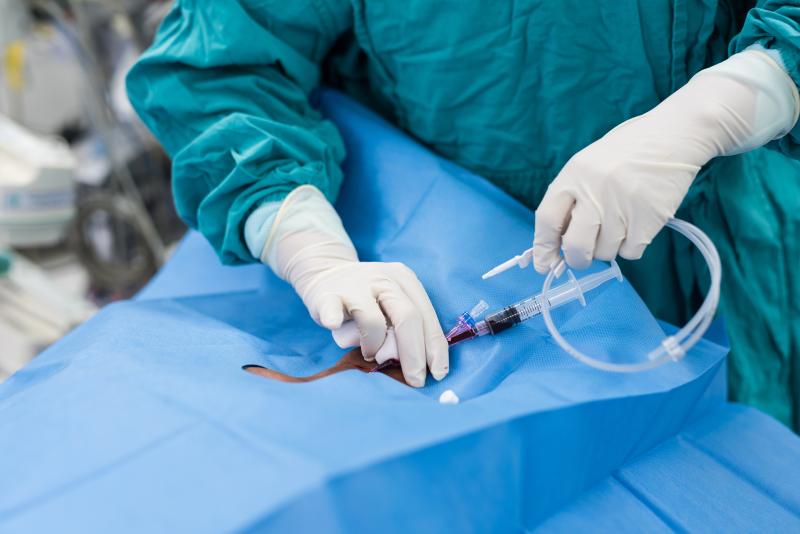
The development of fibrin sheaths related to central vascular access devices (CVADs) appears to heighten the risk of thrombotic and infective complications, according to a recent study.
Researchers reviewed the medical charts of 179 consecutive patients who had had CVADs placed and underwent isotope scans. Uptake was categorized into three categories, representing different extents of sheath presence: no, moderate and significant uptake. Outcomes included bloodstream infections, thrombotic episodes and persistent withdrawal occlusion.
Majority of the patients (n=130) had no isotope uptake, while 30 and 19 had moderate and significant uptake levels, respectively. [Br J Nurs 2019;28:S10-S18]
Each patient was followed for up to 12 months after the scan, until device removal or until death. During this time period, three patients in the significant uptake group developed blood stream infections, resulting in an incidence rate of 16 percent. The corresponding rate in the no uptake group was less than half, at 7 percent (n=9).
Bloodstream infections were reported in three participants in the moderate uptake group, with an incidence rate of 10 percent.
The researchers also performed ultrasound Doppler and other radiological imaging methods to verify the occurrence of symptomatic thromboses. One (0.8 percent) and two (6.7 percent) patients, respectively, were confirmed to have thrombosis in the no uptake and moderate uptake groups. No such cases were reported for the significant uptake arm.
This may be “due to the smaller number of patients within this group, pointing towards a need for larger sample sizes in future studies,” the researchers explained.
However, when distinctions were made based on the presence of sheaths alone, patients whose devices had formed sheaths had a fivefold risk of developing thromboses than those without the phenomenon (4.4 percent vs 0.7 percent).
In contrast, persistent withdrawal occlusions occurred with comparable frequencies across all uptake groups, with rates ranging from 5 percent to 7 percent.
Despite this, taking all cases of complications together revealed a clear difference according to sheath formation. The rate of total complications were 15 percent, 23 percent and 21 percent for the no, moderate and significant uptake arms, respectively.
Alternatively, 22 percent of all patients who had any degree of uptake showed any complication, as opposed to only 15 percent of those with no evidence of isotope uptake.
“The adhesion of the sheath to the catheter and subsequent microbial adhesion are as a result of intermolecular forces,” the researchers explained. “The presence of fibrin sheaths may remain following removal of a CVAD, and these ‘ghost remnants’ of the catheter may significantly affect patient morbidity and mortality.”
Patients who show high isotope uptake levels around the CVADs, as is indicative of catheter sheaths, should be flagged and brought to the attention of their respective medical teams, they recommended. These patients need to be monitored closely for infections and other possible complications.